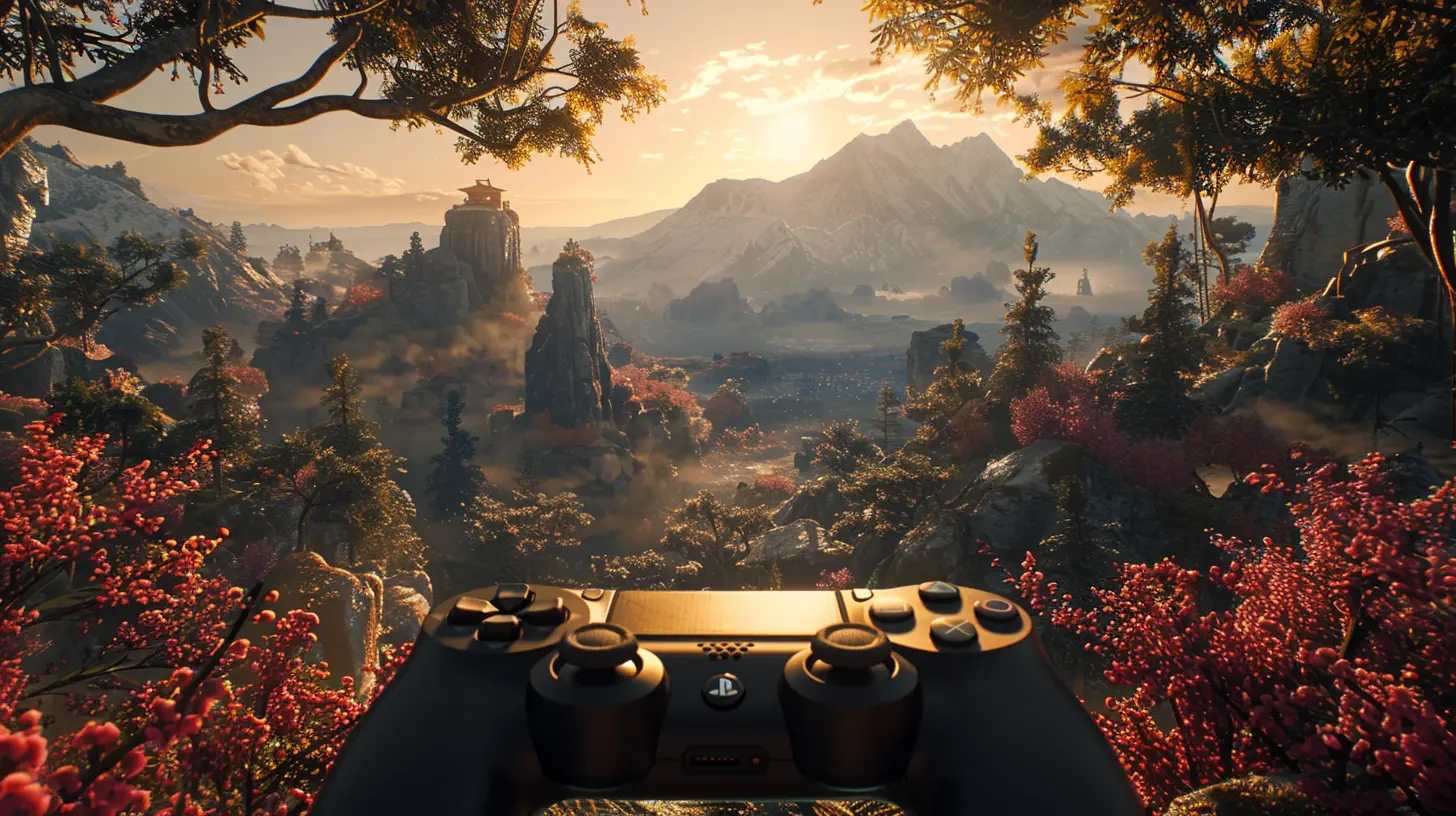How the Latest Graphics Tech is Shaping Next-Gen Consoles
21 May 2025
Imagine this: you're sitting on your couch, controller in hand, staring at your TV screen. But it's not just any screen—it's a portal to jaw-dropping, hyper-realistic worlds where every shadow, glimmer, and detail looks so real you feel like you could reach out and touch it. This is where we’re headed with next-gen consoles, thanks to the ever-evolving world of graphics technology.
Graphics tech has always been the lifeblood of gaming innovation. It's the secret sauce that turns pixelated blobs into living, breathing characters and bland landscapes into lush, immersive playgrounds. But in recent years, this tech has been shifting gears faster than a race car in Forza Horizon. Let's dig into how the latest advancements in graphics tech are not just improving consoles but redefining the entire gaming experience. 
A Quick Look Back: How Graphics Got Here
Before we dive into the future, let’s rewind for a second. Do you remember playing on the original PlayStation or Xbox? Back then, games often looked more like blocky Lego sets with clunky animations. But it was all good because we didn’t know what we were missing.Fast forward to now, and it’s borderline unbelievable how far we’ve come. Consoles have evolved from handling simple 3D models to processing ultra-complex textures, dynamic lighting, and even extremely advanced physics simulations. It’s like going from a flip phone to a top-of-the-line smartphone—but for gaming. And the driving force behind all of this? Graphics technology. 
Real-Time Ray Tracing: The Game Changer
Let’s talk about the golden child of modern graphics: real-time ray tracing. You’ve probably heard this buzzword thrown around a lot, and for good reason. Ray tracing is a rendering technique that simulates how light interacts with objects in real life. It’s why reflections in windows, puddles, and shiny surfaces in next-gen games look so insanely realistic.In older games, reflections and lighting were often "faked." Developers had to pre-bake lighting into games, which was time-consuming and lacked dynamic flexibility. But now? Ray tracing calculates light in real-time, making it respond to changes in the environment and creating a more immersive experience.
Both the PlayStation 5 and Xbox Series X have embraced ray tracing like a long-lost sibling, and it’s paying off big time. Games like Cyberpunk 2077 and Minecraft (yes, even blocky Minecraft!) deliver stunning visuals when ray tracing is enabled. It’s one of those features that, once you experience it, you can’t really go back.
Heads Up: Ray tracing can be super demanding in terms of processing power, which brings us to the next big player in the graphics revolution: hardware. 
GPUs: The Muscle Behind the Magic
No gaming console is complete without a robust GPU (graphics processing unit). The GPUs in the latest consoles are absolute beasts compared to their predecessors. They’re not just playing catch-up with gaming PCs anymore—they’re giving them a run for their money.Take the AMD RDNA 2 GPU architecture found in both the PS5 and Xbox Series X. It’s essentially the engine revving under the hood, enabling these consoles to support up to 4K resolution, ray tracing, and high frame rates simultaneously. It’s like having a Ferrari engine in what was once a minivan. More power means more possibilities, and that’s exactly what gamers are seeing.
Plus, the addition of features like Variable Rate Shading (VRS) ensures that GPUs can focus their power on critical areas of a game screen, rendering them with higher fidelity while saving resources for less important elements. The result? Games that look stunning without compromising performance. 
AI-Powered Graphics: Smarter, Not Harder
Graphics aren’t just about raw power anymore—they’re getting smarter, too. AI is stepping into the picture and helping developers create realistic visuals more efficiently.One game-changing example is AI-driven upscaling tech like NVIDIA's DLSS (Deep Learning Super Sampling) and AMD's FSR (FidelityFX Super Resolution). These technologies use machine learning to upscale lower-resolution images into stunning 4K visuals, without the hardware fully rendering every pixel. In simpler terms, it’s like turning a blurry photo into a high-def masterpiece without breaking a sweat.
Why does this matter for consoles? Well, it means developers can push the limits of visual fidelity without overloading the hardware. For gamers, it’s a win-win: better graphics and smoother gameplay.
Open Worlds, Limitless Worlds
Another way graphics tech is influencing next-gen consoles is through the creation of massive, seamless open worlds. Remember when loading screens were everywhere? You’d walk into a new area, and boom—loading screen. Talk about breaking immersion.Thankfully, graphics advancements combined with ultra-fast SSDs are making those interruptions a thing of the past. Now, we can have expansive worlds that load in the blink of an eye, filled with intricate details that were unimaginable a generation ago.
Games like Horizon Forbidden West and Elden Ring showcase how visually rich open worlds can enhance storytelling and gameplay. You’re not just playing a game—you’re living it.
The Future: What’s Next for Gaming Graphics?
So, what does the future hold? If the current trajectory is anything to go by, next-gen consoles will continue to blur the line between gaming and reality. Here are a few trends to keep an eye on:1. Photorealism
Games are getting so realistic that sometimes you have to squint to tell if you’re looking at a game or a real-world photo. The push for photorealism will only grow as GPUs become more powerful and developers innovate further.2. Virtual Reality (VR) and Graphics
Better graphics tech means VR experiences will get even more lifelike. Immersive worlds in VR, coupled with hyper-realistic visuals, will make you feel like you’ve truly stepped into another universe.3. Cloud Gaming and Streaming
Graphics tech isn’t just limited to physical hardware. Cloud gaming services like Xbox Cloud Gaming and PlayStation Now are increasingly leveraging advanced graphics to stream high-quality visuals directly to your devices, reducing the need for expensive consoles or PCs.4. Procedural Generation
Graphics aren’t just about what developers can create manually. Using procedural generation, vast game worlds can be algorithmically created with stunning detail, saving time and opening the door to infinite possibilities.Wrapping It Up
The latest graphics technology is doing much more than making games look pretty—it’s reshaping how we experience them altogether. From ray tracing and AI-driven enhancements to GPUs that feel like they belong in NASA, we’re living in a golden age of gaming.If you ever needed a reason to be excited about the future of consoles, just take a look at where graphics tech is going. It’s not just about playing games anymore; it’s about entering entirely new dimensions where imagination and reality collide.
So, the next time you boot up your PS5 or Xbox Series X, take a moment to appreciate the tech working behind the scenes. After all, without these advances, gaming wouldn’t be the same jaw-dropping escape it is today.
all images in this post were generated using AI tools
Category:
Gaming NewsAuthor:

Madeleine McCaffrey
Discussion
rate this article
3 comments
Ariana Dillon
This article brilliantly highlights how advancements in graphics technology, like ray tracing and AI enhancements, are revolutionizing gaming experiences on next-gen consoles.
May 28, 2025 at 3:43 AM

Madeleine McCaffrey
Thank you! I'm glad you found the article insightful. The impact of these technologies on gaming is truly transformative!
Calaris Simon
The latest graphics technology revolutionizes immersion in gaming, enhancing realism and interactivity. As developers harness these advancements, player experiences will evolve dramatically, setting new industry standards.
May 27, 2025 at 3:26 AM

Madeleine McCaffrey
Absolutely! The advancements in graphics technology are indeed setting a new benchmark for immersive gaming experiences, pushing the boundaries of realism and interactivity in next-gen consoles.
Xavi Tucker
Next-gen consoles: now with graphics so good, you might forget you’re not actually living in the game!
May 26, 2025 at 3:57 AM

Madeleine McCaffrey
Absolutely! The advancements in graphics technology are blurring the lines between gaming and reality, creating immersive experiences that truly engage players.



